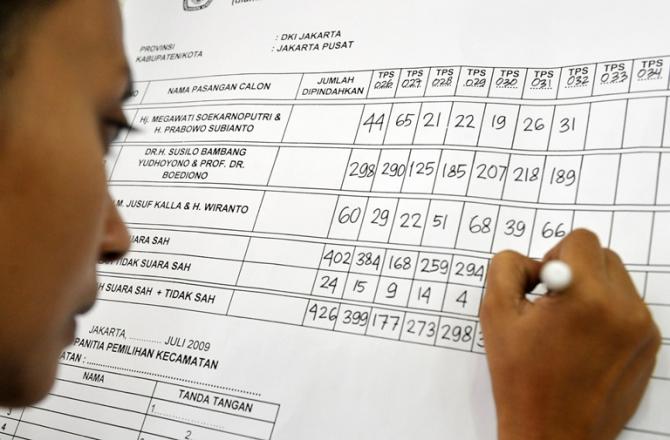
Fifth, a candidate from a political party buys votes from one or more other political parties within the same constituency. The selling parties are typically small and will not get enough votes to secure a seat. Vote-buying via this method may only occur after subdistrict level polling officials and/or election officials receive bribe money.
Threshold for the DPR
The threshold to enter the DPR is 3.5 percent of the total vote for members of the House of Representatives. The purpose of the threshold is to reduce the number of political parties in the House. Will it achieve its purpose? Out of 12 political parties participating in the 2014 election, how many will meet the threshold? I raise these questions because there are three elements in Indonesia’s electoral system that have counter effects. First, the range of constituencies is considerably wide since 70 out of 77 constituencies have between six and 10 allocated seats. The higher the number of seats in a constituency, the higher the opportunity for small parties.
Second, the proportional electoral formula uses the Hare quota method, while the remaining seats allocated to political parties is based of the largest remainder. This formula tends to benefit small parties, as parties whose votes do not meet a quota still have the opportunity to secure seats.
Third, the DPR election is held three months prior to the presidential election. Consequently, during the election period, voters generally do not consider presidential candidates in determining their choice (although when a particular candidate is known to be running for a given party it can impact on voters’ decisions, as clearly happened in 2009 when President Susilo Bambang Yudhoyono was the obvious choice for his Democratic Party). Presidential candidates don’t officially exist at that time and voters are presumed to cast ballots based only on a party’s characteristics. This enables high numbers of political parties to win seats in parliament. If the 3.5 percent threshold is applied along with the limited size of a constituency of three to six seats, the preferred formula for proportional electoral system is the Sainte-Lague method, and if the election is held on the same date and at the same polling place, the number of political parties in the parliament would be more manageable.







%20resized.png)
